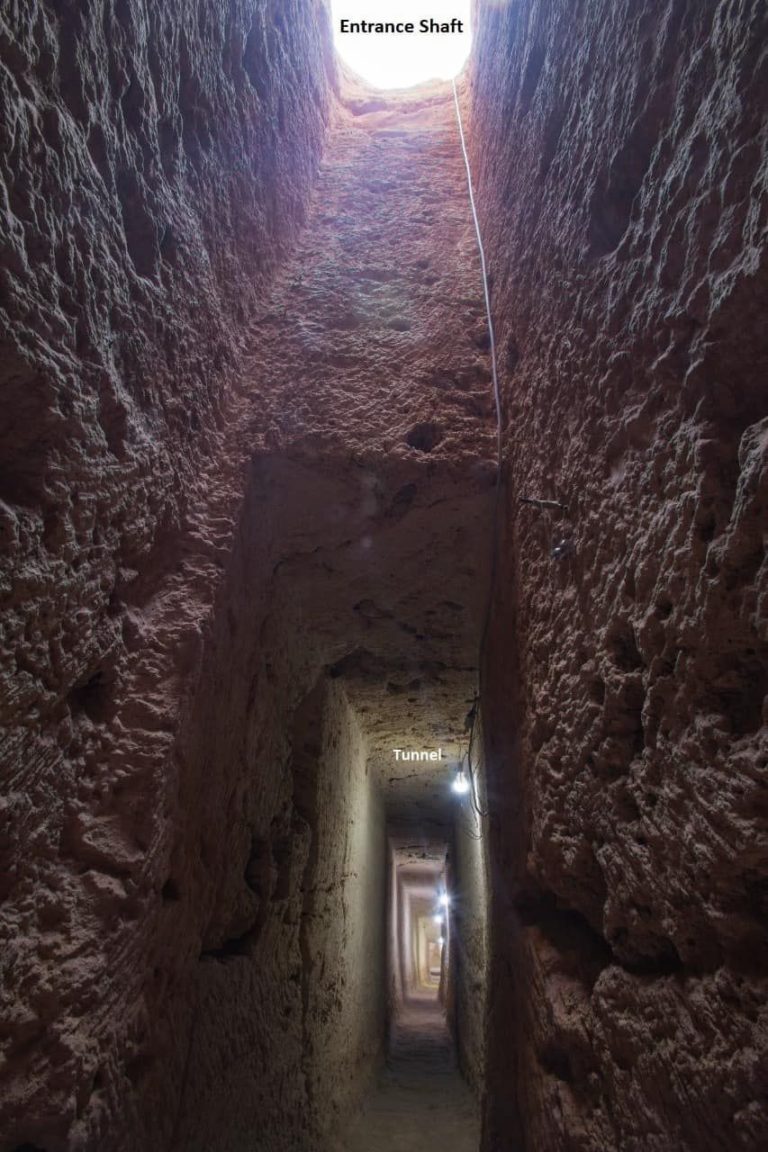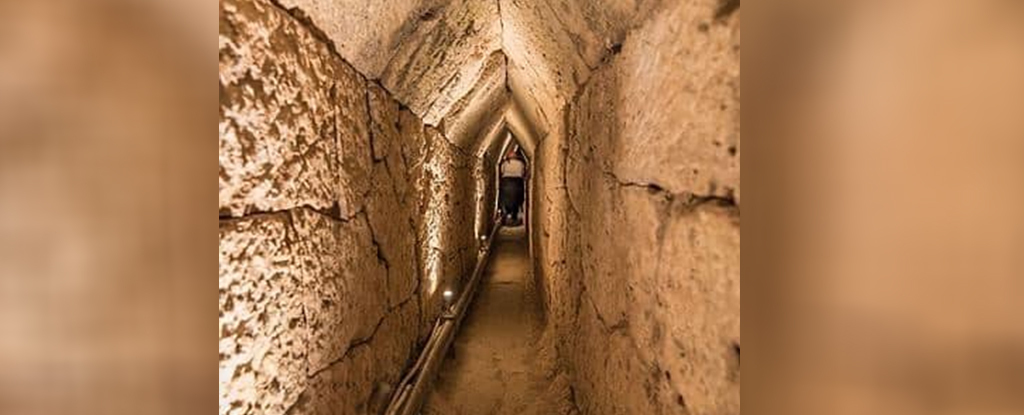In search of Cleopatra’s tomb, archaeologists find a “Geometrically Remarkable” tunnel.

n a groundbreaking discovery, archaeologists searching for Cleopatra’s tomb have stumbled upon a “geometrically remarkable” tunnel, sparking renewed excitement and speculation about the elusive final resting place of one of history’s most famous queens. This tunnel, with its precise engineering and potential historical significance, promises to shed new light on ancient Egyptian architecture and possibly lead to Cleopatra’s long-sought burial site.
The search for Cleopatra’s tomb has been an enduring quest for archaeologists and historians. Cleopatra VII, the last active ruler of the Ptolemaic Kingdom of Egypt, has captivated the imaginations of scholars and enthusiasts alike for centuries. Her life, intertwined with the likes of Julius Caesar and Mark Antony, and her dramatic death, are the stuff of legend. Despite extensive historical documentation of her life, the location of her tomb has remained a mystery, fueling countless expeditions and investigations.
The recent discovery of the tunnel occurred at the Taposiris Magna temple complex, located near Alexandria. The temple, dedicated to the ancient Egyptian gods Osiris and Isis, has long been a focal point for researchers due to its historical and architectural significance. The tunnel, hidden beneath the temple’s foundations, extends several meters underground and exhibits extraordinary geometric precision.
Initial investigations reveal that the tunnel is not only an architectural marvel but also a potential clue in the search for Cleopatra’s tomb. The tunnel’s construction demonstrates advanced knowledge of engineering and geometry, with perfectly aligned walls and a consistent gradient. This precision suggests that the tunnel may have served a significant purpose, possibly related to the temple’s religious functions or as part of a larger network of subterranean passages.

Archaeologists are particularly intrigued by the tunnel’s orientation and its potential connections to other parts of the temple complex. Some speculate that it could lead to hidden chambers or burial sites. The discovery has reignited hopes that Cleopatra’s tomb might be located nearby, as the temple complex fits the historical descriptions of her possible burial place. Cleopatra and Mark Antony were believed to have been buried together in a grand tomb, a wish granted by Octavian (later Emperor Augustus) following their defeat and subsequent suicides.
The tunnel’s geometric design also provides valuable insights into the architectural prowess of ancient Egyptian builders. The use of precise angles and measurements indicates a high level of sophistication in construction techniques. Researchers are now analyzing the tunnel’s structure to understand the methods and tools used by the builders, which could reveal more about the technological advancements of the period.
Moreover, the discovery has significant implications for our understanding of ancient Egyptian religious practices. The tunnel’s location and design might suggest it was used for ritualistic purposes, possibly as a processional route or a symbolic passage representing the journey to the afterlife. The association of the Taposiris Magna temple with Osiris and Isis further supports this theory, as these deities were central to ancient Egyptian beliefs about death and resurrection.

The excitement surrounding the tunnel’s discovery extends beyond the archaeological community. The prospect of finding Cleopatra’s tomb has captured the public’s imagination, drawing attention to the ongoing excavations and the rich history of ancient Egypt. This discovery serves as a reminder of the enduring allure of Cleopatra’s legacy and the tantalizing possibility of uncovering new historical treasures.
In the coming months, archaeologists will continue to explore the tunnel and its surroundings, employing advanced technologies such as ground-penetrating radar and 3D mapping to uncover its secrets. Each step forward brings us closer to potentially solving one of history’s greatest mysteries. The search for Cleopatra’s tomb is not just about finding a physical location but also about connecting with the past and understanding the cultural and historical contexts that shaped one of the ancient world’s most fascinating figures.
In conclusion, the discovery of a “geometrically remarkable” tunnel by archaeologists seeking Cleopatra’s tomb marks a significant milestone in the quest to uncover ancient Egypt’s hidden secrets. This architectural wonder not only highlights the ingenuity of ancient builders but also reignites hope of locating Cleopatra’s final resting place. As investigations continue, the tunnel stands as a testament to the enduring mystery and allure of Cleopatra’s legacy, inviting us to delve deeper into the past and uncover the stories that have shaped our history.